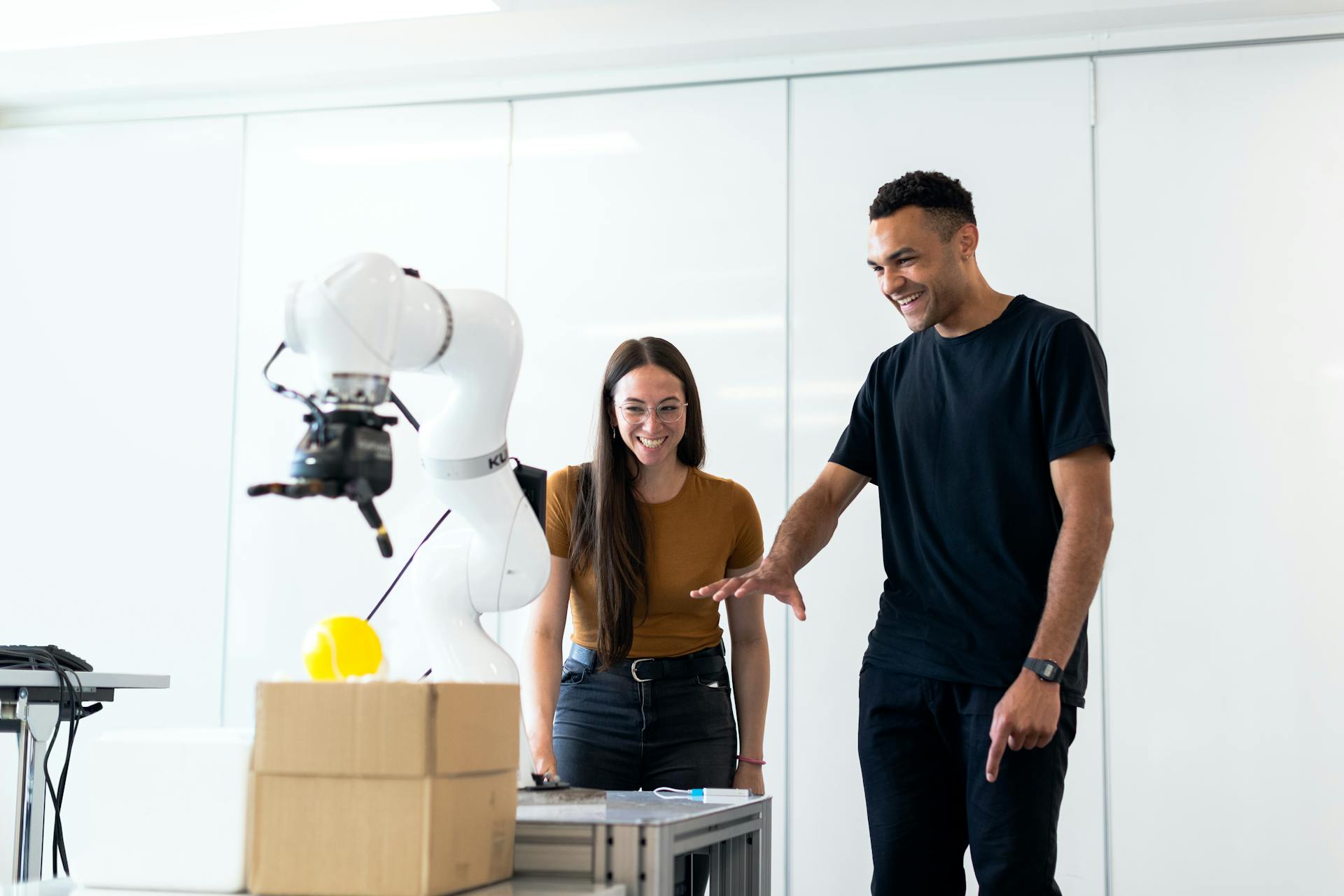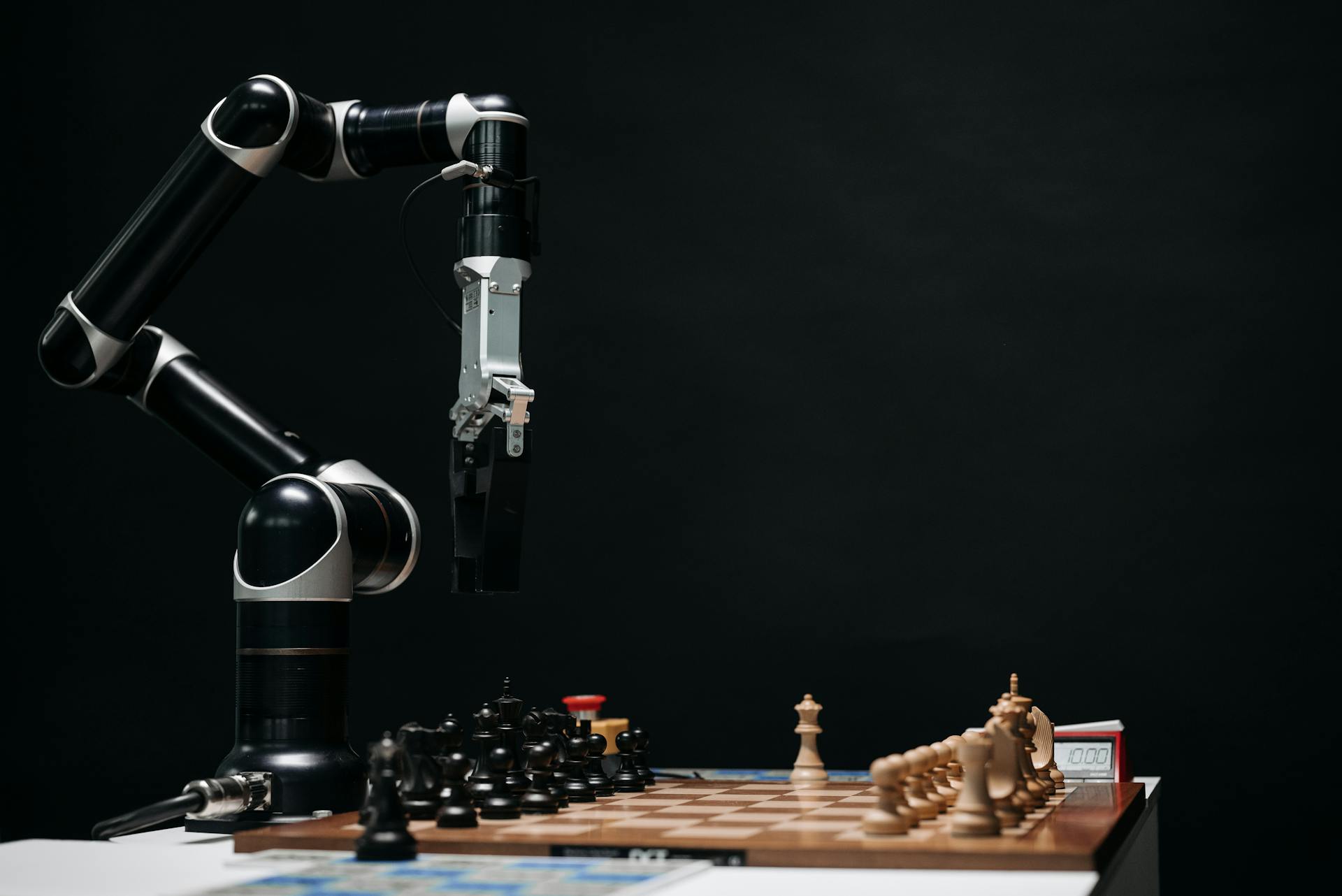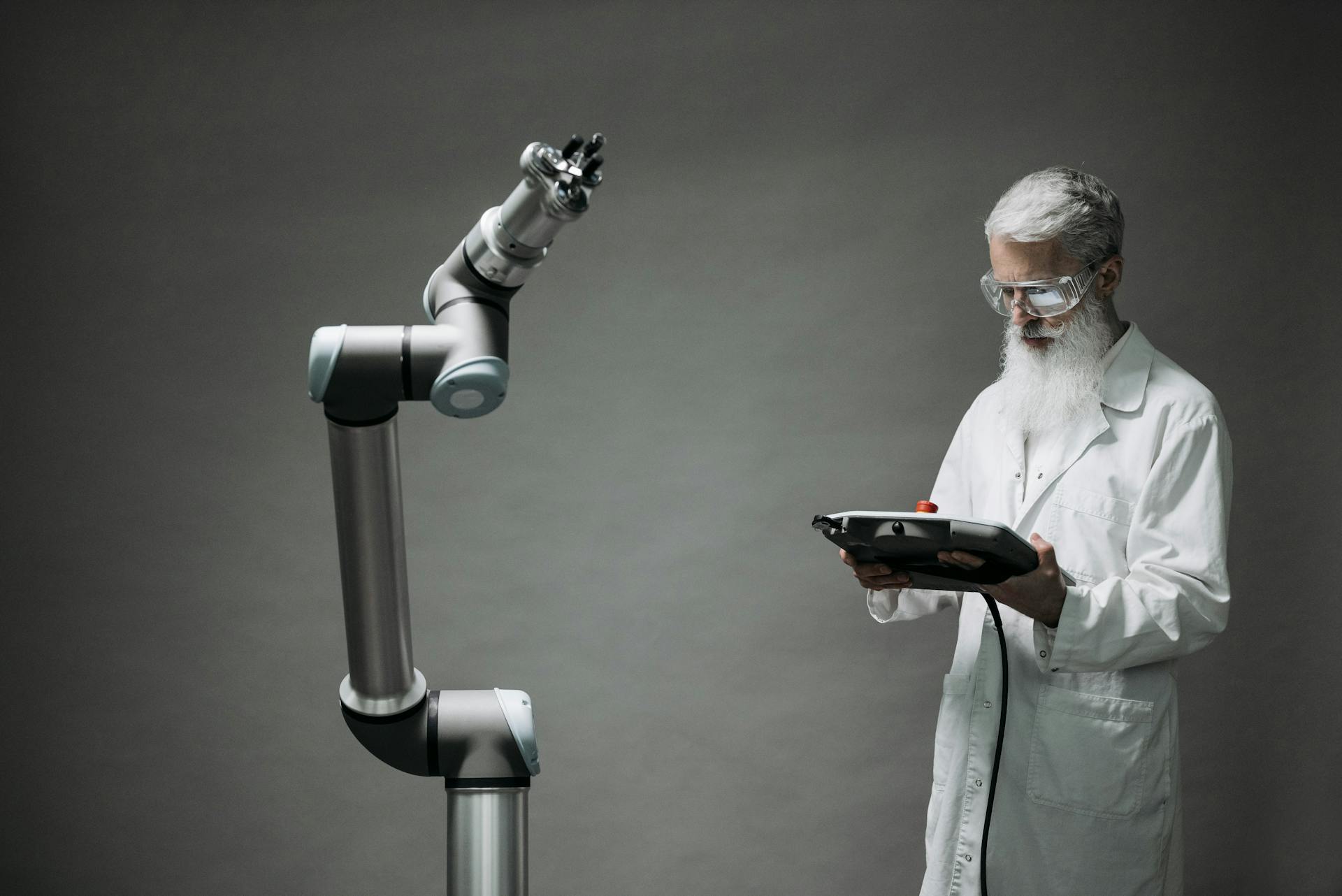
Domain randomization is a technique used to improve the accuracy of neural networks by exposing them to a wide range of environments and scenarios. This can be achieved by randomly varying the visual properties of a simulation, such as lighting, texture, and color.
By doing so, the network learns to generalize and adapt to new situations, rather than being overly reliant on specific details. For instance, a network trained on a simulation with varied lighting conditions can better handle real-world scenarios with different lighting.
This approach can be particularly useful in robotics and computer vision applications, where the network needs to perform well in a variety of environments. For example, a robot trained using domain randomization can navigate through different types of terrain and lighting conditions.
The key idea behind domain randomization is to create a diverse set of training scenarios that challenge the network to learn generalizable features.
On a similar theme: Neural Network vs Generative Ai
What is Domain Randomization?
Domain randomization is a technique that exposes a policy to a variety of environments by controlling randomization parameters in the source domain.
The source domain is essentially a simulator that we have full access to, and the target domain is the physical world where we want to transfer the model.
We can control a set of N randomization parameters in the source domain, denoted as e_ξ, with a configuration ξ, sampled from a randomization space, ξ ∈ Ξ ⊂ ℝ^N.
This means we can manipulate various aspects of the environment to create different scenarios, which helps the policy learn to generalize.
During policy training, episodes are collected from the source domain with randomization applied, allowing the policy to learn from a variety of environments.
The policy parameter θ is trained to maximize the expected reward R(⋅) average across a distribution of configurations.
In a way, discrepancies between the source and target domains are modeled as variability in the source domain, making it easier for the policy to adapt.
How It Works
Domain randomization works by exposing the policy to a variety of environments, making it learn to generalize and adapt to new situations. This is achieved by applying randomization parameters in the source domain, creating a distribution of configurations that the policy is trained to maximize the expected reward across.
The policy is trained in the source domain, which is controlled and simulated, and is exposed to a set of $N$ randomization parameters, denoted as $e_\xi$. These parameters are sampled from a randomization space, $\Xi \subset \mathbb{R}^N$, and are used to collect episodes and train the policy.
The policy learns to generalize by being trained on a distribution of configurations, which models the discrepancies between the source and target domains as variability in the source domain.
Why It Works
Domain randomization is a technique that's surprisingly effective in bridging the gap between simulated and real-world environments.
It's often attributed to the idea of "discrepancies between the source and target domains are modeled as variability in the source domain" (Peng et al. 2018). This means that by introducing randomness in the simulated environment, we can help the policy learn to generalize and adapt to the uncertainties of the real world.

One way to achieve this is through uniform domain randomization, where each randomization parameter is bounded by an interval and uniformly sampled within the range. This can control various aspects of the scene, such as object positions, shapes, and colors, as well as lighting conditions and camera settings.
The list of randomization parameters is quite extensive and can include:
- Position, shape, and color of objects
- Material texture
- Lighting condition
- Random noise added to images
- Position, orientation, and field of view of the camera in the simulator
Physical dynamics in the simulator can also be randomized, including features such as mass and dimensions of objects, robot bodies, and joints. This helps the policy learn to adapt to different physical dynamics, including the partially observable reality.
By combining visual and dynamics domain randomization, it's possible to learn policies that work surprisingly well in reality, even in tasks with a large sim2real gap.
On a similar theme: Boston Dynamics Generative Ai
Guided
Guided DR is a more sophisticated strategy that replaces uniform sampling with guidance from task performance, real data, or simulator. This approach aims to save computation resources by avoiding training models in unrealistic environments.

It's reasonable to think that a more guided approach could help avoid infeasible solutions that might hinder successful policy learning. One motivation for guided DR is to save computation resources.
Guided DR can be motivated by the desire to avoid infeasible solutions that might arise from overly wide randomization distributions. This is a key consideration in the development of more efficient and effective learning strategies.
For more insights, see: Ai and Ml Solutions
Approaches to Domain Randomization
Domain randomization is a powerful technique that allows robots to learn from simulations and adapt to real-world environments.
Training an LSTM policy to generalize across different environmental dynamics can lead to impressive results, as seen in the learning dexterity project.
A key aspect of domain randomization is its ability to compose a collection of different tasks. This is especially evident in the use of memory in recurrent networks, which empowers the policy to achieve meta-learning across tasks.
In some cases, a policy without memory, such as a feedforward policy, may not be able to transfer to a physical robot. This highlights the importance of memory in domain randomization.
The time it takes for a robot to achieve a task can decrease significantly once it has achieved the first rotation, as observed in the learning dexterity project.
Sources
- https://lilianweng.github.io/posts/2019-05-05-domain-randomization/
- https://journalofbigdata.springeropen.com/articles/10.1186/s40537-021-00455-5
- https://bcommons.berkeley.edu/generalizing-domain-randomization-zero-shot-transfer
- https://developer.nvidia.com/blog/structured-domain-randomization-makes-deep-learning-more-accessible/
- https://research.aalto.fi/en/publications/dropo-sim-to-real-transfer-with-offline-domain-randomization
Featured Images: pexels.com


